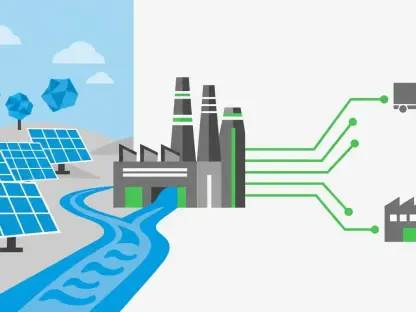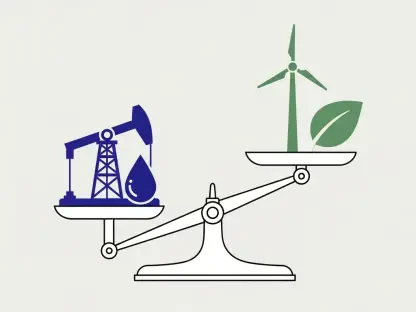Artificial intelligence (AI) and machine learning (ML) are becoming central to enhancing safety and efficiency in nuclear energy systems. By addressing the limitations of traditional monitoring methods, AI-driven virtual sensors offer a profound transformation in how nuclear reactors are managed. The work led by Syed Bahauddin Alam and his team at the University of Illinois Urbana-Champaign demonstrates the immense potential of these technologies in ensuring higher reliability and real-time responses to potential issues.
Introduction to AI in Nuclear Energy
The Need for Advanced Monitoring
In the intricate world of nuclear reactors, the need for advanced monitoring solutions is paramount. Traditional physical sensors, which are the backbone of many current systems, often struggle to function effectively in the harsh and inaccessible environments of nuclear reactors. This predicament results in incomplete data coverage, creating blind spots that could pose significant safety risks. The arduous and hazardous nature of these environments means that ensuring the longevity and functionality of these sensors becomes a continual challenge. Consequently, the gaps in data coverage can compromise the comprehensive understanding needed to maintain reactor safety.
Limitations of Conventional Techniques
In addition to physical sensors, traditional methods of monitoring nuclear reactors include physics-based numerical modeling techniques like Computational Fluid Dynamics (CFD). Although CFD can provide extensive thermal and fluid dynamic analyses, it is hamstrung by slow processing times, which are ill-suited for the real-time demands of nuclear power facilities. This delay in threat detection and response can mean the difference between averting a disaster and encountering one. The rapid dynamics within nuclear reactors necessitate a faster, more adaptive approach to monitoring that conventional techniques simply cannot provide. This has sparked the quest for more innovative solutions to bridge the gap.
AI-driven Virtual Sensors
Innovating Monitoring Techniques
The integration of AI-driven virtual sensors marks a significant innovation in nuclear energy system monitoring. By utilizing deep-learning operator-surrogate models, these virtual sensors effectively complement their physical counterparts. They provide a comprehensive view of critical degradation indicators within the nuclear systems. This development represents a seismic shift in monitoring capabilities, offering a proactive rather than reactive approach. These models function by interpreting vast amounts of data generated within the reactor environment, identifying patterns that indicate potential issues before they manifest into severe problems.
Deep Operator Neural Networks (DeepONet)
The development of DeepONet signifies a breakthrough in real-time monitoring. Created by Alam and his team, DeepONet operates as a virtual sensor predicting essential thermal-hydraulic parameters within the nuclear reactor. It effectively acts as the eyes and ears of the system in regions where traditional sensors may fail. The precision and instantaneous nature of its predictions result from robust training on state-of-the-art graphics processing units (GPUs). DeepONet’s ability to deliver complete multiphysics solutions across the entire reactor domain means it can provide the continuous feedback necessary to avoid pitfalls associated with delayed response times in potentially hazardous situations.
Collaborative Efforts and Computational Resources
Leveraging High-Performance Computing
The advancements in AI-driven monitoring are predominantly supported by high-performance computing resources. The research team utilized the National Center for Supercomputing Applications’ (NCSA) Delta system and leveraged NVIDIA A100 GPUs for training and evaluation. High-performance computing was indispensable in ensuring the models could handle real-world applications with accuracy and speed. The computational power allowed for large-scale data generation and analysis, facilitating the robustness of these AI models. This level of computational support is crucial as it ensures that the virtual sensors are not just theoretical constructs but practical tools ready for deployment.
Collaborative Synergy
The successful implementation of these advanced AI models underscores the importance of multidisciplinary collaboration. Experts from various fields, including AI-driven scientific computing and high-performance computing, worked in tandem to transform these cutting-edge ideas into tangible solutions. Collaboration with the NCSA provided the necessary computational resources and expertise to fine-tune the AI models. This synergy between domain expertise and AI specialists facilitated breakthroughs in monitoring techniques and predictive analyses, ultimately resulting in technology that enhances the safety and efficiency of nuclear energy systems. These collaborations demonstrate the essential role of collective effort in tackling complex challenges.
Enhancing Safety and Efficiency
Real-Time Predictive Capabilities
The capability of DeepONet to predict complete multiphysics solutions across entire reactor domains in real time represents a monumental step forward in reactor monitoring. This continuous feedback loop ensures that potential issues can be addressed immediately, significantly reducing safety risks. By providing timely and accurate data, the virtual sensors enable operators to make informed decisions swiftly. This real-time predictive ability not only enhances safety protocols but also ensures that the operational integrity of the reactor is maintained without requiring extensive downtime for inspections, which can disrupt energy supply and increase operational costs.
Improving Operational Reliability
By overcoming the limitations of traditional sensors and CFD models, AI-driven virtual sensors are setting new standards for reliability in nuclear energy systems. Their ability to provide constant, accurate data means that the overall monitoring process becomes more dependable. This enhanced reliability ensures that nuclear reactors can operate more efficiently, with fewer maintenance interruptions and reduced risk of unplanned shutdowns. The use of these advanced sensors can anticipate and mitigate potential issues before they become critical, thus improving the overall longevity and safety of nuclear facilities. The incorporation of AI in monitoring also paves the way for more sustainable and effective management practices within the nuclear energy sector.
Conclusion
Artificial intelligence (AI) and machine learning (ML) are increasingly vital in boosting safety and efficiency in nuclear energy systems. These advanced technologies address the limitations of traditional monitoring approaches, promising a significant transformation in the management of nuclear reactors. AI-driven virtual sensors, in particular, offer new ways to monitor reactor conditions accurately and in real time, surpassing conventional methods. Research conducted by Syed Bahauddin Alam and his team at the University of Illinois Urbana-Champaign highlights the enormous potential of AI and ML in ensuring the reliability of nuclear energy systems. Their work demonstrates that these technologies can provide timely responses to potential issues, enhancing the overall safety of nuclear reactors. As AI and ML continue to evolve, their applications in nuclear energy are likely to expand, offering even greater improvements in monitoring and safety protocols. This advancement marks a critical step forward in the quest for safer and more efficient nuclear energy solutions.








